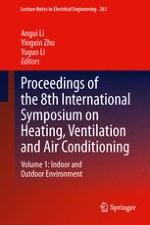2014 | OriginalPaper | Buchkapitel
68. A Review of Carbon Accounting Models for Urban Building Sector
verfasst von : Zhiyong Ren, Xiangli Li
Erschienen in: Proceedings of the 8th International Symposium on Heating, Ventilation and Air Conditioning
Verlag: Springer Berlin Heidelberg
Aktivieren Sie unsere intelligente Suche, um passende Fachinhalte oder Patente zu finden.
Wählen Sie Textabschnitte aus um mit Künstlicher Intelligenz passenden Patente zu finden. powered by
Markieren Sie Textabschnitte, um KI-gestützt weitere passende Inhalte zu finden. powered by
